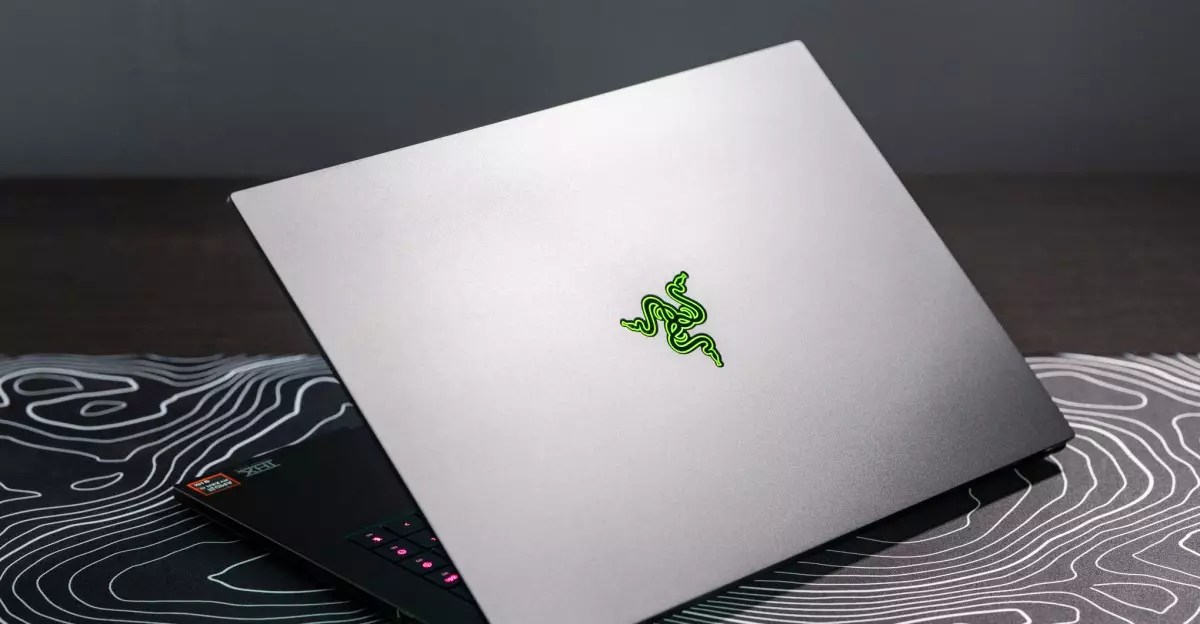The Razer Blade 16 has entered the laptop landscape with much anticipation, promising to be the ideal fusion of high-performance gaming and sleek design—one that could rival the MacBook Pro. While the aesthetics of the Blade series have traditionally attracted a devoted following, the latest iteration pushes the envelope further. The new thinner and lighter chassis, along with the latest Nvidia RTX 5090 GPU, certainly catches the eye. However, the benefits of these improvements come with a price tag that raises eyebrows: $4,499.99, a noticeable bump from its predecessor. The question arises: has Razer created a true gaming marvel, or are we witnessing a case of style over substance?
Hardware Feelings: A Mixed Bag
At first glance, the Razer Blade 16’s hardware is undeniably impressive. The gorgeous 16-inch OLED display offers a resolution of 2560 x 1600, coupled with a staggering 240Hz refresh rate. The visuals are captivating, presenting games and creative content with vibrant clarity. The keyboard and trackpad also hold their ground, showing Razer’s commitment to user experience—mostly. However, the introduction of a macro key column on the right side remains problematic; mis-pressing these keys can disrupt not just gameplay but everyday tasks as well. It’s appalling that despite years of feedback, hardware manufacturers still overlook user-friendly design elements, leading to frustration in otherwise ergonomic devices.
Another noteworthy enhancement is the shift to a substantially thinner and lighter frame, marking a 7mm reduction in thickness and a weight decrease of 0.8 pounds. As a result, the Blade 16 feels more portable—a major plus for gamers on the go. However, this change raises concerns about thermal management during extended gaming sessions. Razer’s Laptop Cooling Pad does promise enhanced performance, but adding such accessories further increases the overall cost and may introduce more noise. The ongoing struggle with overheating in thin gaming laptops makes one question the viability of such ultra-slim designs.
Performance: The Double-Edged Sword
The RTX 5090 GPU is heralded as an upgrade, boasting capabilities like DLSS and frame generation, which should theoretically enhance performance significantly. In practical terms, the architecture has shown about a 20% improvement in efficiency compared to the RTX 4090. However, how this translates to real-world usage, particularly on battery power, is more troubling. Early tests indicate that even basic productivity tasks sap battery life significantly, which is disappointing for a high-end device marketed as a multipurpose tool.
Here’s the crux: the Blade 16 struggles to even sustain a modest workday without frequent recharges—an unacceptable limitation for anyone who needs reliable performance outside of gaming. It struggles in a basic productivity setting, falling short of rivals like the Asus ROG Zephyrus G16, which can effortlessly surpass eight hours on a single charge. This performance inconsistency raises serious doubts about whether users are truly getting what they pay for.
Price Versus Practicality: A Costly Dilemma
Investing over $4,500 in a laptop begs the question: is it worth it? While the Blade 16’s design and capabilities are undeniably attractive—providing excellent gaming performance and aesthetic appeal—its shortcomings in everyday productivity cast a long shadow. In essence, the prospect of a single device catering to both creative and gaming needs is compelling. However, charging multiple times a day for a product that is touted as a flagship is irrelevant if it fails to deliver on its promise.
For the same investment, consumers can buy a mid-range MacBook Pro, which offers robust performance and longevity, and still have a hefty budget left over for a decent gaming laptop. The rationale of a ‘one-stop-shop’ begins to crumble against the stark economics of functionality and reliability. The allure of the Blade 16 is strong, and in the right hands, it could be a powerhouse. Yet, would serious gamers and creators be better served by opting for devices that specialize rather than trying to do it all?
In Search of Ultimate Gaming Glory
As I continue my journey with the Razer Blade 16, my feelings remain ambivalent. The allure of its stunning display and promising specs is countered by the haunting specter of hardware bugs and performance flukes. If Razer can resolve the ongoing issues surrounding battery life and stability, I might find myself enamored with the Blade 16 as a fitting companion for gaming marathons and creative endeavors alike. Yet, until substantial testing exists free from glitches, skepticism will continue to loom large over this impressive yet flawed device. The tech community watches eagerly, questioning whether Razer can deliver on its bold promises or succumb to the pitfalls of ambition.


Leave a Reply